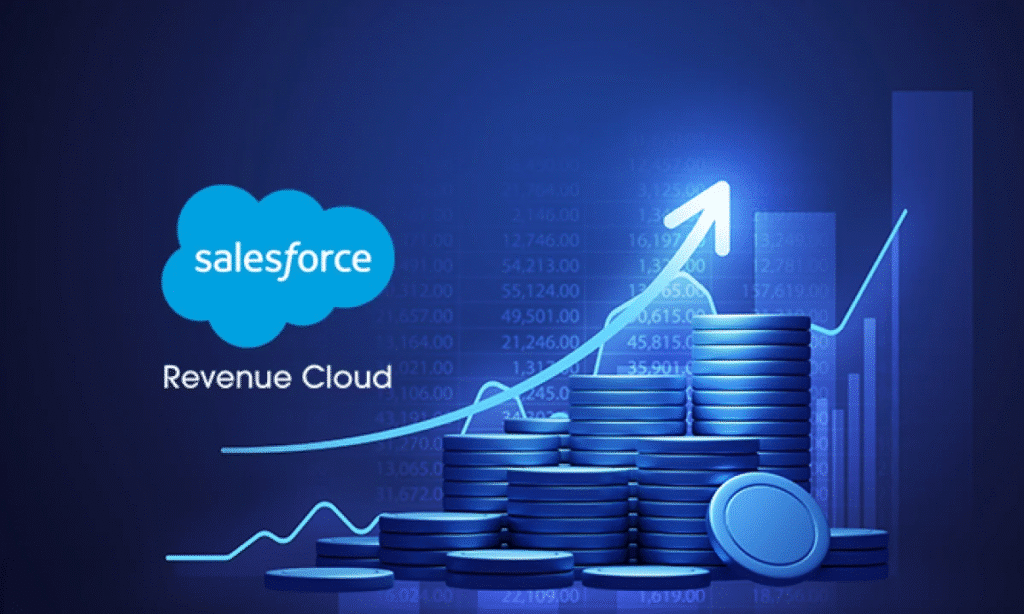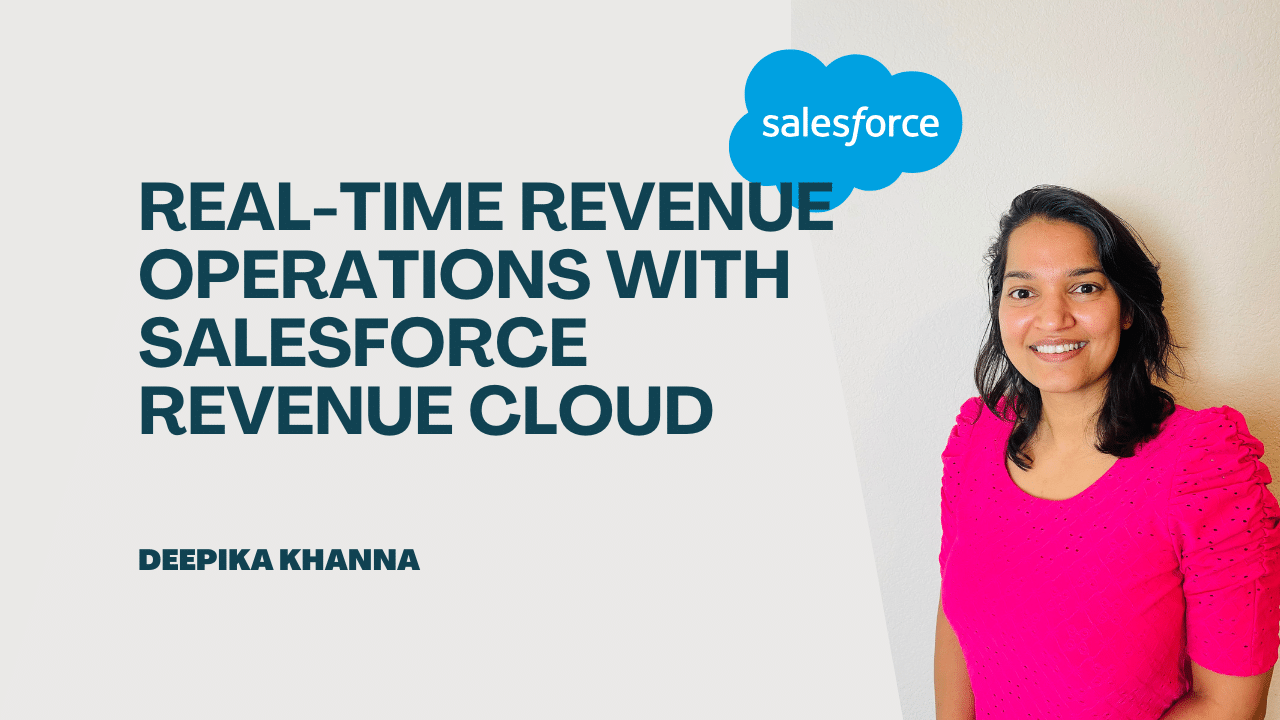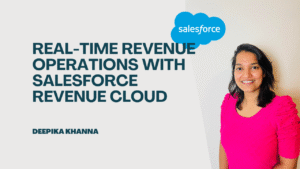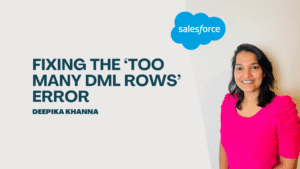Businesses cannot rely on stagnant revenue management systems or fragmented sales processes in today’s ultra-competitive digital market. It is now necessary to have speed, accuracy and visibility across the whole income lifecycle. Companies want to connect their sales, financial and customer success teams under a single data model. Salesforce Revenue Cloud has become a revolutionary way to do this, allowing for real-time revenue operations (RevOps).

This blog post talks about how Salesforce Revenue Cloud changes the way revenue management is done by linking all the steps from quoting and billing to renewals and reporting. This lets businesses grow faster, make more accurate predictions and give customers a better experience.
Table of Contents
ToggleUnderstanding Revenue Cloud: A Unified Approach to Revenue Management.
CPQ (Configure, Price, Quote), Billing, Subscription Management, and Partner Relationship Management (PRM) are all part of the Salesforce Customer 360 ecosystem. The Salesforce Revenue Cloud is an integrated platform that puts them all together.
At its core, Revenue Cloud assists businesses:
- Automate the sales process from quote to cash
- Make it easier to renew and change contracts.
- Allow more than one way to make money (hybrid, subscription, usage-based, and permanent license)
- Give real-time information about customer data and sales performance
- Make sure that the guidelines for revenue recognition are followed.
Salesforce Revenue Cloud lets businesses use a single source of truth for all activities related to revenue, unlike traditional sales systems that treat each stage (quoting, billing, and collections) as a different silo.
The Shift to Real-Time Revenue Operations
Historically, revenue management required various systems, including CRM for sales, ERP for billing, spreadsheets for forecasting and standalone accounting tools for revenue recognition. This disorganised way of doing things often led to:
- Data silos between the finance and sales teams. Different areas with different prices and quotes.
- Delay in recognising income and improper predictions
- Poor customer experience because billing and help were not linked
Real-time revenue operations, on the other hand, use automation, analytics, and unified processes to connect all the functions that bring in money. This model makes sure that when something changes in one process, like a product upgrade, or a change to a contract, it is immediately mirrored in systems for quoting, billing and forecasting.
This change is made possible by Salesforce Revenue Cloud. It lets everyone in the business—from sales reps to CFOs—work with real-time data, and automated revenue processes. This makes sure that the whole company is open, quick and accurate.
Key Components of Salesforce Revenue Cloud
To fully understand how Revenue Cloud makes real-time RevOps possible, you need to know what its main parts are and how they work together.

1. Salesforce CPQ: Configure, Price, Quote
Salesforce CPQ makes it easier to set up and price complicated products. It makes sure that sales teams can quickly and accurately make quotes without having to wait for permission or use old spreadsheets.
Key benefits:
- Smart rules for setting up products and setting prices
- Discounting and approvals are done automatically
- Guided selling to make sales go more smoothly
- Creating quotes in real time and integrating e-signature
In real-time revenue processes, CPQ is the key tool that makes sure that products, prices and contracts are created correctly right away.
2. Salesforce Billing
If you agree to a quote, Salesforce Billing will automatically send invoices, collect payments, and record income. By linking billing straight to CPQ, data does not have to be entered again by hand and billing mistakes are less likely to happen.
Key benefits:
- Scheduling and billing that are done automatically
- Support for different pricing methods, such as usage-based, subscription-based and milestone-based
- Accounting and ERP tools can work together.
- Real-time reporting and recognition of income
This makes sure that businesses keep accurate and up-to-date financial records, which is a key part of real-time RevOps.
3. Subscription management
Subscription and recurring income models are becoming more and more popular in modern business, especially in the SaaS, telecom and media industries. Salesforce Revenue Cloud has a flexible subscription management engine that makes it easy to control the whole lifecycle of a customer.
Key benefits:
- Automatically handle withdrawals, upgrades, downgrades, and renewals
- Offer personalised deals and renewals based on usage data; keep customers from leaving; and make sure accurate predictions of ongoing revenue
Companies can handle all parts of the customer lifecycle dynamically with this module, which is based on real-time data.
4. Partner Relationship Management (PRM).
Revenue Cloud has PRM features built in to make it easier for businesses that sell through partners or agents to handle indirect sales. Partners can use the same tools for quoting, pricing, and renewing as direct sales teams. This makes sure that all income channels are consistent.
Key benefits:
- Empower helps partners with buying and quoting on their own.
- Keep the name and prices the same.
- Shared screens can help people work together better.
- Keep track of incentive schemes and channel performance
Businesses can grow their revenue operations with this integration while still having full insight and control.
Power of Real-Time Revenue Insights
Modern revenue processes are defined by being able to see what’s going on in real time. Through its analytics and dashboards driven by Salesforce CRM Analytics (formerly Tableau CRM), Salesforce Revenue Cloud gives you deep insights into every part of the revenue lifecycle, from the first quote to the last payment.
What this means for your business:
- CFOs can get correct revenue forecasts right away.
- Sales bosses can see in real time how many leads turn into sales.
- Billing and funds can be easily matched up by finance teams.
- Customer success teams can plan ahead for extensions and customer loss.
With these insights, businesses can stop managing in a reactive way and start making decisions based on data, which will help them make more money and grow faster.
Benefits of Real-Time Revenue Operations using Salesforce Revenue Cloud:

- Unified Customer Experience: From a single platform, customers get accurate quotes, clear bills and smooth renewals.
- Increased Revenue Accuracy: When CPQ, Billing, and CRM are all in sync at the same time, mistakes caused by manual data entry are eliminated.
- Quicker Time to Cash: Automation shortens the time it takes to get paid after finishing a deal.
- Scalability Across Business Structures: Enables one-time sales, recurring subscriptions, and hybrid pricing structures, making it perfect for enterprises transitioning to the “as-a-service” market.
- Regulatory Compliance: ASC 606 and IFRS 15 capabilities are built-in to enable compliance with worldwide revenue recognition rules.
- Predictable Forecasting: Real-time analytics enable finance teams to properly estimate revenue, and plan strategically.
- Cross-Functional Alignment: Revenue Cloud makes collaborative and accountable work easier by bringing together sales, finance and operations under one source of truth.
Conclusion
Real-time revenue operations are no longer a nice-to-have in today’s digital economy; they are a critical must. Salesforce Revenue Cloud gives companies the structure, automation and intelligence they need to update the way they handle revenue from beginning to end.
Companies can speed up deals, make billing smarter, and build stronger connections with customers by combining sales, finance and customer success into a single system that is powered by real-time data.
As more companies switch to subscription, and consumption-based models, Salesforce Revenue Cloud stands out as the tool that not only makes managing revenue easier but also speeds up long-term, customer-focused growth.
Bottom Line
Platforms like Mytutorialrack, run by Salesforce trainer Deepika Khanna, offer structured courses, real-world projects, and mentorship to help professionals master Salesforce solutions, such as Net Zero Cloud, and stand out as experts making a difference in the changing CRM landscape.






